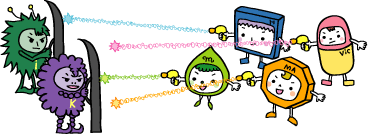| |
On TV or newspaper, you
may be bound to learn the scary story about antibiotic-resistance, the
increasing numbers of bacteria no longer respond to treatment with many
of the antibiotics we have.
Why do bacteria become resistance to antibiotics?
Bacteria have the best capacity to survive and to evade elimination by
doing specific things to resist antibiotics. The resistance mechanisms
are very complex and may principally be :
嘆 Bacteria create specific things to break down
the antibiotic (inactivated by decomposing) or to chemically change the
structure of the antibiotic (inactivated by modifying乯.
嘇 Antibiotic target points in the bacteria are
changed into inaccessible points 乮qualitative mutation of point乯, and
then the points are reproduced on and on (quantitative mutation of point).
嘊 Bacteria themselves are structurally altered
to prevent antibiotics binding. Antibiotics are excluded from cell entry
or are pumped out of the cell (efflux).
Because antibiotic resistance may be accomplished by more
than one resistance mechanisms, the problem is very tough.
Genes of these antibiotic resistance bacteria may be spread and reproduced
in many ways among different strain of bacteria or non-resistant cells.
Therefore, one day, one antibiotic may become no longer effective against
a disease caused by the resistant bacteria. This in turn will result
in developing new antibiotics. It is a vicious circle.
 |
|
